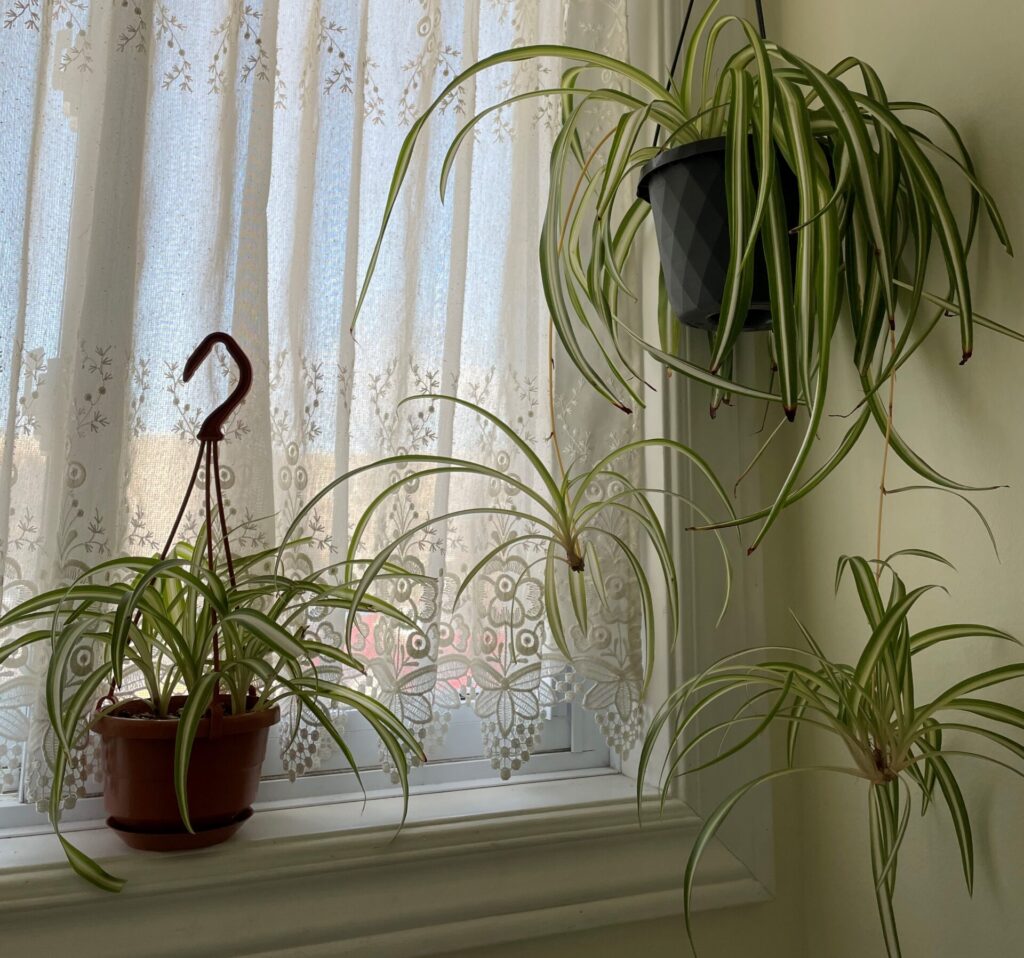
Hi,
I purchased this spider plant last year. It had at least 4 baby plants already (one branch had ‘twins’) When a new branch sprouted, I successfully propagated 3 babies.
It’s been over one year, there’s no new branch and babies plants seem to be too big for the entire plant.
To keep the entire plant healthier, do those babies need to be transferred or better stayed there?
What are some tips to produce more babies?
Thank you in advance!
The spider plant (Chlorophytum comosum) is native to South Africa and may grow up to 75 cm wide and 90 cm long in a hanging pot. Bright indirect light and careful watering promotes healthy growth. From the photo of your mother plant and its healthy looking plantlets (“babies” or offshoots), it would appear you are having good success. It is difficult to accurately assess whether the mother plant is receiving sufficient bright light but it does look a little thinner and paler than the potted plantlets. Perhaps giving the mother plant stronger bright light might help. The plantlets can be either detached and transplanted to produce new plants, or left on to create a very full basket.
Spider plants send out flower shoots in response to the short day length in fall provided they receive only indirect natural light. The production of plantlets follows flowering. Although they may appear at any time of year, offshoot development can be stimulated through your control of the hours of light the plant receives. Provide the plant with 12 hours of light and long, uninterrupted dark nights for at least three weeks. However, if the plant is in a room where you have the lights on each evening artificially creating a longer day, then it may not flower and you will have fewer spiders. As well, avoid heavy fertilization as plants may produce more and darker leaves (and brown leaf tips) at the expense of developing new offshoots.
For more information, please see Spider Plant
Wishing you success in promoting bloom and enjoying increased development of “babies”.

